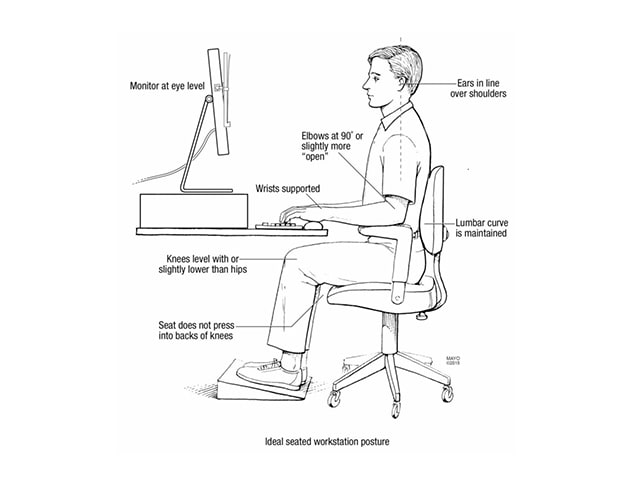Oct. 11, 2022
Organized competitive video gaming, also known as esports, is a rapidly growing industry. Experts estimate that as of 2020, more than 200 million Americans play video games. And worldwide, esports is now recognized as a sport in more than 60 countries.
Although video gaming doesn't usually involve direct physical contact with other players, competitive gamers have health care needs and injuries associated with this activity, including overuse injuries and psychological impacts.
Clinicians are becoming more aware of how to meet the health care needs of gamers, but there is still a lack of research and knowledge specific to this patient population. Recognizing this knowledge gap, staff members within Mayo Clinic's Department of Physical Medicine and Rehabilitation are now working to provide specialized clinical services, education and research that is tailored to these patients' needs. The multidisciplinary team engaged in this work includes Mayo Clinic physiatrists, physical and occupational therapists, and additional providers from Mayo's integrated group practice, such as nutritionists, psychologists, hand surgeons and pediatricians.
The Gaming and Esports Medicine (GEM) team currently offers patients guidance on injury prevention and treatment, posture and equipment optimization, and lifestyle counseling.
Overuse injuries
"The overuse injuries among esports athletes that we see are typically related to situations where demand exceeds the ability of tissues to handle loads, which then leads to repetitive stress and inflammation," explains Jane Konidis, M.D., a physiatrist and the director of GEM at Mayo Clinic in Rochester, Minnesota. "Excessive keyboard, mouse and controller use, poor posture, or suboptimal equipment all can be contributing factors. Inadequate warmup routines, limited recovery time, and poor sleep and nutrition routines also can play a role in injuries among video gamers." Symptoms and injuries commonly associated with gaming include muscle aches, neck and back pain, common extensor tendinopathy (gamer's elbow), De Quervain tenosynovitis (gamer's thumb), and carpal tunnel syndrome.
Socialization and cognition
More-introverted individuals may participate in gaming and can find a sense of connection, community and belonging there. Strengths related to cognitive control also are evident among some gamers, including enhanced problem-solving, selective attention, visual attention and short-term memory abilities.
"Studies have also shown that after a few weeks, competitive gamers demonstrate an increase in gray matter volume and activation in the prefrontal cortex, both of which correlate with improved performance," says Dr. Konidis.
Researchers also have noted a positive relationship between GEM participation and the development of translational skills, including the transfer of improved executive performance and working memory, hand-eye coordination skills, and visuospatial abilities. According to Dr. Konidis, medical students with a history of gaming and those using video game-based training methods perform better when learning to use certain devices, such as those required for laparoscopic and robotic surgery procedures.
Sleep disturbances and depression
Researchers have observed that compared with the general population, esports athletes have significantly delayed sleep patterns and higher rates of depression. "Higher depression scores are associated with the number of awakenings during sleep and higher amounts of practice time," explains Dr. Konidis. "We suspect that nutrition and caffeine consumption may play a role."
Posture and equipment
Postura ideal para trabajar sentado

Postura ideal para trabajar sentado
La postura ideal para trabajar sentado implica una posición adecuada del cuerpo, así como ajustes en la silla y la superficie de trabajo para ayudar a mantener la posición.
Maintaining good posture and equipment positioning during gaming can help optimize breathing and blood circulation and reduce or prevent multiple problems, including neck and back pain, muscle fatigue, and stress on nerves, muscles, tendons and joints. Workstations should be placed an arm's length (20 to 40 cm) away from the body and have the screen positioned at eye level or slightly below eye level. Taking steps to minimize glare can reduce eyestrain, and ending exposure to blue light emitted by screens at least 30 minutes before bedtime can reduce disruptions to sleep patterns.
Current practice model and future plans
Dr. Konidis and the other members of Mayo Clinic's GEM team use an integrated practice model to provide a customized program specific to each GEM participant's needs. "We are committed to protecting and promoting the health of esports players and establishing best practices for the esports industry," says Dr. Konidis. "There is a need to continue developing and offering specialized care and research tailored to individuals who game and professional esports athletes."
For more information
Gaming and Esports Medicine. Mayo Clinic.
Refer a patient to Mayo Clinic.